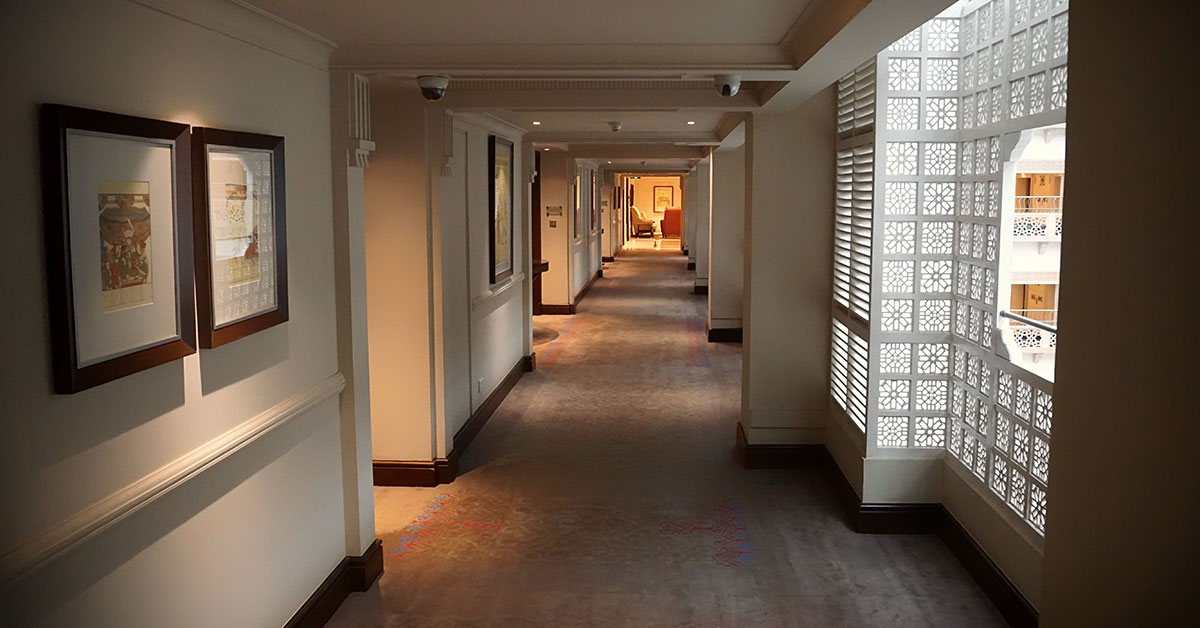A guest’s first impression of a hotel can impact their entire stay, and whether they choose to return in the future. From lobbies and guest rooms to casinos and event spaces, hotels have numerous areas that must remain clean, tidy and accessible for guests, staff and visitors. Following the coronavirus pandemic, guest expectations around cleanliness are higher than ever, making it essential that hotels take the proper steps to enhance guest experience at all levels – starting with the floors.
Dirty carpet can quickly send the wrong message. In fact, a recent study found that dirty carpet in a hotel would negatively impact 80% of Americans’ perception of that business. With proper care, carpet is a long-lasting and sustainable flooring option that offers hotels numerous benefits, including reduced noise pollution, improved indoor air quality and a comfortable away-from-home environment. However, the lifespan of carpet depends on how frequently housekeeping teams clean carpet and address spots and stains, making it vital to establish a comprehensive carpet care program.
Factors that Lead to Carpet Wear and Tear
Flooring plays a big role in aesthetics as well as the perception of cleanliness. Many hotels and casinos pride themselves on their bold, colorful and memorable carpet. Without proper care, carpet wear and tear can occur much more quickly.
Some issues that can impact the lifespan of carpet within a hospitality environment include:
- High foot traffic. Floors within hospitality environments experience high foot traffic, especially near the entrances and popular gathering spaces. Carpet can also experience wear from repeated exposure to roller bags and trolleys.
- Seasonal debris. Different seasons may track in additional debris, from mud to salt to snow to sand. When tracked in on shoes or wheels, it creates an immediate unsightly mark. The more this occurs, the more soils build up in carpet and become difficult to remove.
- Food and drink. Whether the carpet is near a restaurant or located within a guest room, it can be difficult to avoid spilled food and drink. Particularly dark drinks like red wine and coffee can stain quickly and damage carpet.
- Bodily fluids. Although unpleasant, accidents occur. Additionally, with more and more hotels opening their doors to guests and their pets, hotels must be quick to address these protein-based stains.
- Sunlight. Exposing carpet to sunlight for a long period of time can cause fading. Although it occurs over a much longer period of time, fading can make carpet look washed out and old.
Replacing carpet is a significant cost for businesses, especially for large hotels and casinos that use carpet throughout the facility. According to JN+A and HVS Design’s Hotel Cost Estimating Guide, it would cost a midscale hotel with around 135 guestrooms nearly $700 to replace carpet in each room, adding up to a total of nearly $100,000. Carpet replacement can also put certain areas of the building out of service for days or even weeks.
In an effort to keep carpet clean, some facilities may use hot water extraction. While effective at removing deep soils within carpet, hot water extraction soaks carpet, requiring several days to properly dry. Oversaturated carpet can lead to mold and mildew growth that causes foul odors, and ultimately unhappy guests. Hot water extraction can also potentially damage fibers due to high heat and excessive moisture, impacting carpet lifespan.
Best Practices for Maintaining Carpet Appearance
There are numerous ways a hotel can maintain its carpet without taking extreme measures. By implementing a regular carpet cleaning routine, carpet will stay vibrant and clean. To maintain carpet, follow best practices:
- Use matting. Install effective non-slip matting inside and outside all entrances and exits. By stopping debris from entering the building, a facility can prevent excessive staining that can deteriorate the look of carpet prematurely.
- Keep an eye out. Throughout the day, cleaning staff should be reminded to routinely look for any spills and stains on carpet. Once identified, staff should have the proper tools and chemistry to address the spill and prevent a spot from forming.
- Vacuum daily. Vacuuming regularly removes any loose and dry soil from becoming embedded in carpet and wearing it down. It’s especially important to vacuum high traffic areas, such as hallways and lobbies.
- Invest in a low-moisture system. To avoid oversaturating carpet and keep it looking clean, hotels should use low-moisture encapsulation equipment and chemistry. This method effectively removes embedded soils and cleans carpet without large quantities of water. This allows carpet to be put back into use after just 30 minutes.
Achieving Cleanliness and Comfort
Hotels aim to impress guests from the moment they book their stay and well after they check out to secure loyal customers for life. Whether they opt for carpet in light, subdued colors or dark, vibrant patterns, properties want carpet to look its best at all times. By prioritizing cleanliness, hotels can create a clean, comfortable and enjoyable environment for all, and protect their flooring investment..


